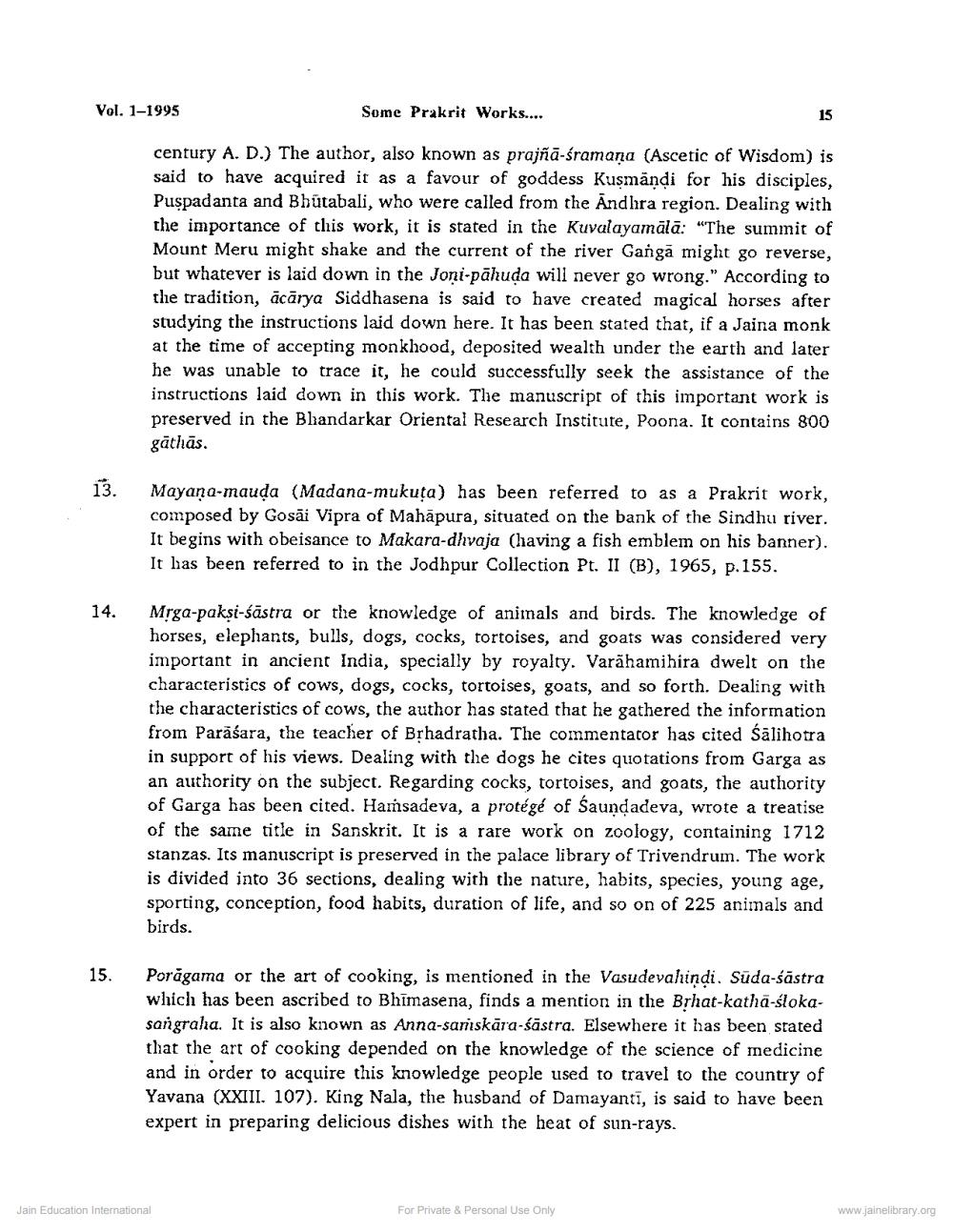Book Title: Some Prakrit Works on Non Religious Literature Author(s): Jagdishchandra Jain Publisher: Z_Nirgrantha_1_022701.pdf and Nirgrantha_2_022702.pdf and Nirgrantha_3_022703.pdf View full book textPage 5
________________ Vol. 1-1995 13. 14. Some Prakrit Works.... century A. D.) The author, also known as prajfid-śramana (Ascetic of Wisdom) is said to have acquired it as a favour of goddess Kusmandi for his disciples, Puspadanta and Bhutabali, who were called from the Andhra region. Dealing with the importance of this work, it is stated in the Kuvalayamälä: "The summit of Mount Meru might shake and the current of the river Ganga might go reverse, but whatever is laid down in the Joni-pähuda will never go wrong." According to the tradition, däcärya Siddhasena is said to have created magical horses after studying the instructions laid down here. It has been stated that, if a Jaina monk at the time of accepting monkhood, deposited wealth under the earth and later he was unable to trace it, he could successfully seek the assistance of the instructions laid down in this work. The manuscript of this important work is preserved in the Bhandarkar Oriental Research Institute, Poona. It contains 800 gāthās. 15. Mayaṇa-mauda (Madana-mukuța) has been referred to as a Prakrit work, composed by Gosai Vipra of Mahapura, situated on the bank of the Sindhu river. It begins with obeisance to Makara-dlivaja (having a fish emblem on his banner). It has been referred to in the Jodhpur Collection Pt. II (B), 1965, p.155. 15 Mrga-paksi-sästra or the knowledge of animals and birds. The knowledge of horses, elephants, bulls, dogs, cocks, tortoises, and goats was considered very important in ancient India, specially by royalty. Varähamihira dwelt on the characteristics of cows, dogs, cocks, tortoises, goats, and so forth. Dealing with the characteristics of cows, the author has stated that he gathered the information from Parāśara, the teacher of Bṛhadratha. The commentator has cited Śalihotra in support of his views. Dealing with the dogs he cites quotations from Garga as an authority on the subject. Regarding cocks, tortoises, and goats, the authority of Garga has been cited. Hamhsadeva, a protégé of Saundadeva, wrote a treatise of the same title in Sanskrit. It is a rare work on zoology, containing 1712 stanzas. Its manuscript is preserved in the palace library of Trivendrum. The work is divided into 36 sections, dealing with the nature, habits, species, young age, sporting, conception, food habits, duration of life, and so on of 225 animals and birds. Poragama or the art of cooking, is mentioned in the Vasudevahindi. Süda-sästra which has been ascribed to Bhimasena, finds a mention in the Brṛhat-katha-slokasangraha. It is also known as Anna-saṁskāra-śāstra. Elsewhere it has been stated that the art of cooking depended on the knowledge of the science of medicine and in order to acquire this knowledge people used to travel to the country of Yavana (XXIII. 107). King Nala, the husband of Damayanti, is said to have been expert in preparing delicious dishes with the heat of sun-rays. Jain Education International For Private & Personal Use Only www.jainelibrary.orgPage Navigation
1 ... 3 4 5 6 7 8 9 10
